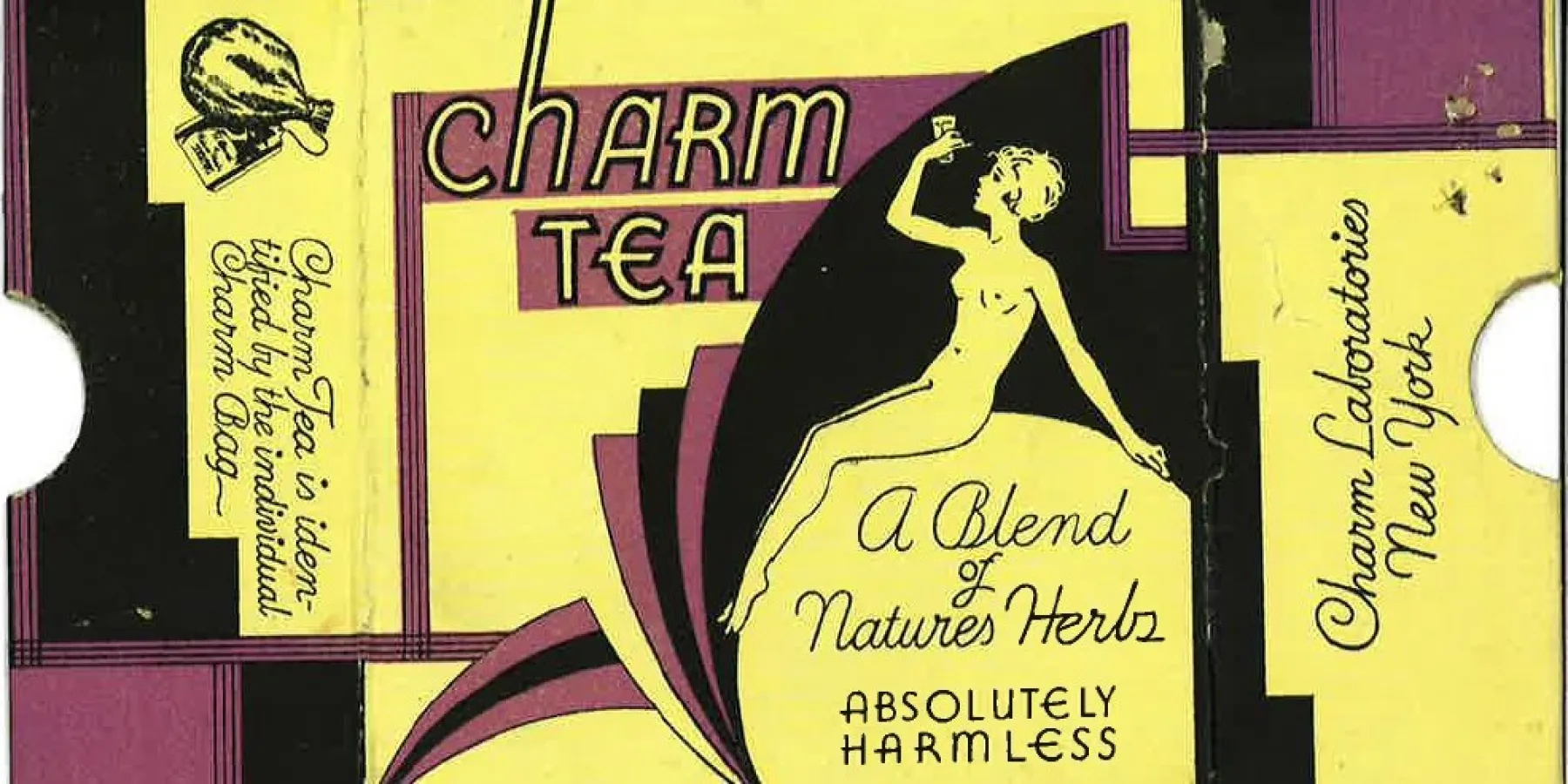Abstract
The American Medical Association’s Historic Health Fraud and Alternative Medicine Collection provides a glimpse into the origins of America’s cosmetic and supplement industry and the advertising practices that sustain it.
Supplements in the Industrial Age
Turn on the television, open Instagram, sit at a bus stop, and you will be bombarded with messages that your looks could and should be improved upon—if you just buy stuff. Individuals’ and companies’ claims to secrets of success in weight loss, flawless skin, or lifelong virility are not new. Ancient Egyptians used makeup as we know it,1 and scientists have documented face and body paint use during the middle Pleistocene, about 130 000 years ago.2 Since the Industrial Age, consumers have created a market for enhancement products. Increased rates of literacy and technology advances3 led to a boom in newspaper and magazine sales, and both media were filled with advertisements for patent medicines, including supplements.4
From 1906 to 1975, the best resource the public had for evaluating claims about supplements was the Bureau of Investigation of the American Medical Association (AMA).5 Individuals curious about weight loss pills or beauty creams could write to the AMA’s chemical laboratory to request information or relay horror stories about the ill effects of their use of such products. When the AMA investigated, it reported fraudsters to the Better Business Bureau or the US Food and Drug Administration (FDA). Due to high demand for its services, however the AMA’s lab was pressed to prioritize investigation of supposed cures for cancer and diphtheria. Some beauty, diet, and virility products’ effectiveness claims were so outrageous that the lab often responded to inquiries about them by stating that any company or physician making such clearly false promises should be reported to state authorities. But state medical licensure as we know it today didn’t exist until the late 19th century.6
Advertisements for supplements were directed to consumers in newspapers, letters, pamphlets, celebrity endorsements, and on billboards. For 69 years, the AMA’s Bureau of Investigation collected these products’ packaging and advertisements, establishing what is known today as the Historical Health Fraud and Alternative Medicine Collection of the AMA Archives. Some of its most interesting items are categorized by “ailment” and are described herein.
Before and After Fat Foe
In the late 19th and early 20th century, America underwent a cultural shift in body image. Between Hollywood and the advertising industry, a desire to have a lean physique became de rigeur.7 While obesity and “overindulgence” were problems for both men and women,8 advertisements for weight loss supplements in the early to mid-20th century tended to feature images of women’s bodies, in particular.
This early example of “anti-obesity” advertising represents women’s bodies, despite use of the gender-neutral term fat folks.
Figure 1. Fat-Foe Obesity Herb Tea Ad, 1912
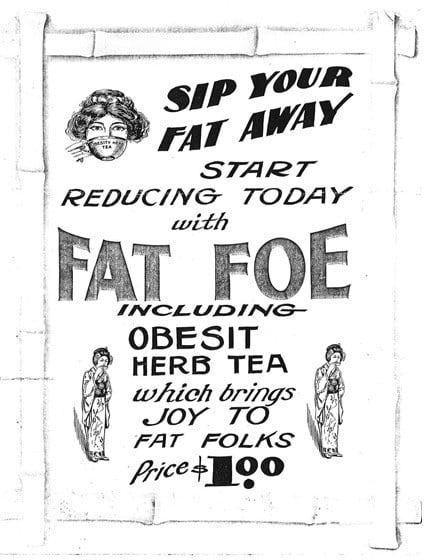
Weight loss tea is still commonly available today, although we have known for at least 100 years that weight loss attributed to tea is minimal.9
Figure 2. Charm Tea Package, 1933

Re-duce-oids were more harmful than teas, with side effects ranging from serious to fatal.
Figure 3. Re-duce-oids Ad, 1929
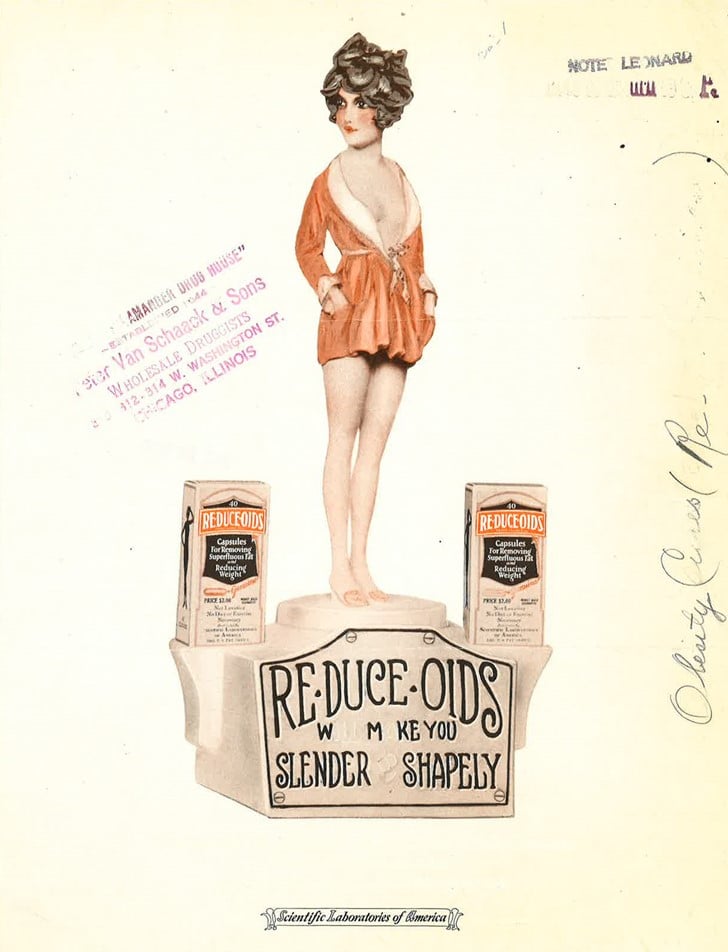
Although Re-duce-oids were for both men and women, the packaging represents 2 lean women’s bodies’ silhouettes.
Figure 4. Re-duce-oids Package, 1936
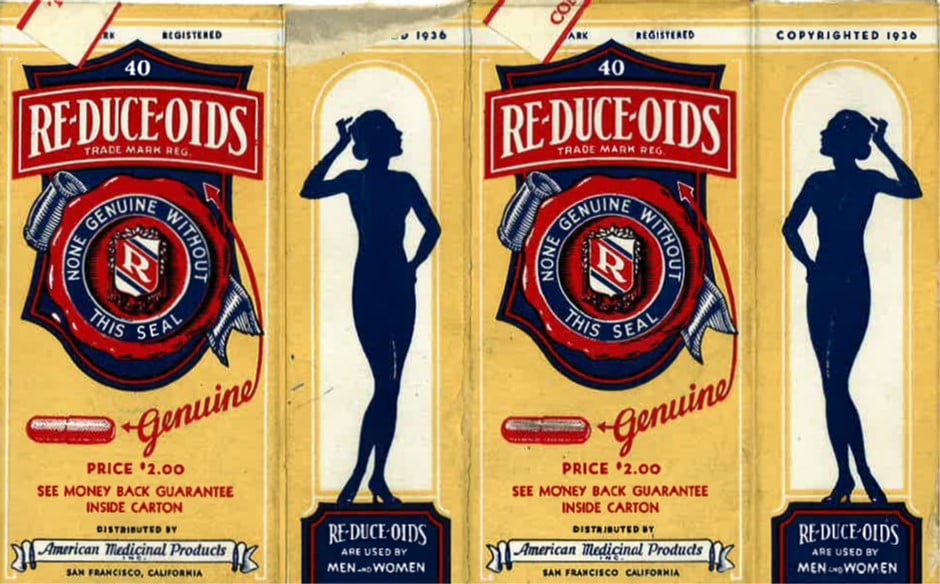
Re-duce-oid pills included a thyroid extract and potassium iodide, a commonly used medication for hyperthyroidism, and were especially dangerous for persons with diabetes, goiter, or coronary diseases, each of which is commonly comorbid with obesity.10
The ingredients used in Re-duce-oids were atypical for the time, since most reducing tonics were simply laxatives, suggesting why the 1920s and 1930s were known as the “golden age of purgation.”11
Figure 5. Bonkora Ad, 1933
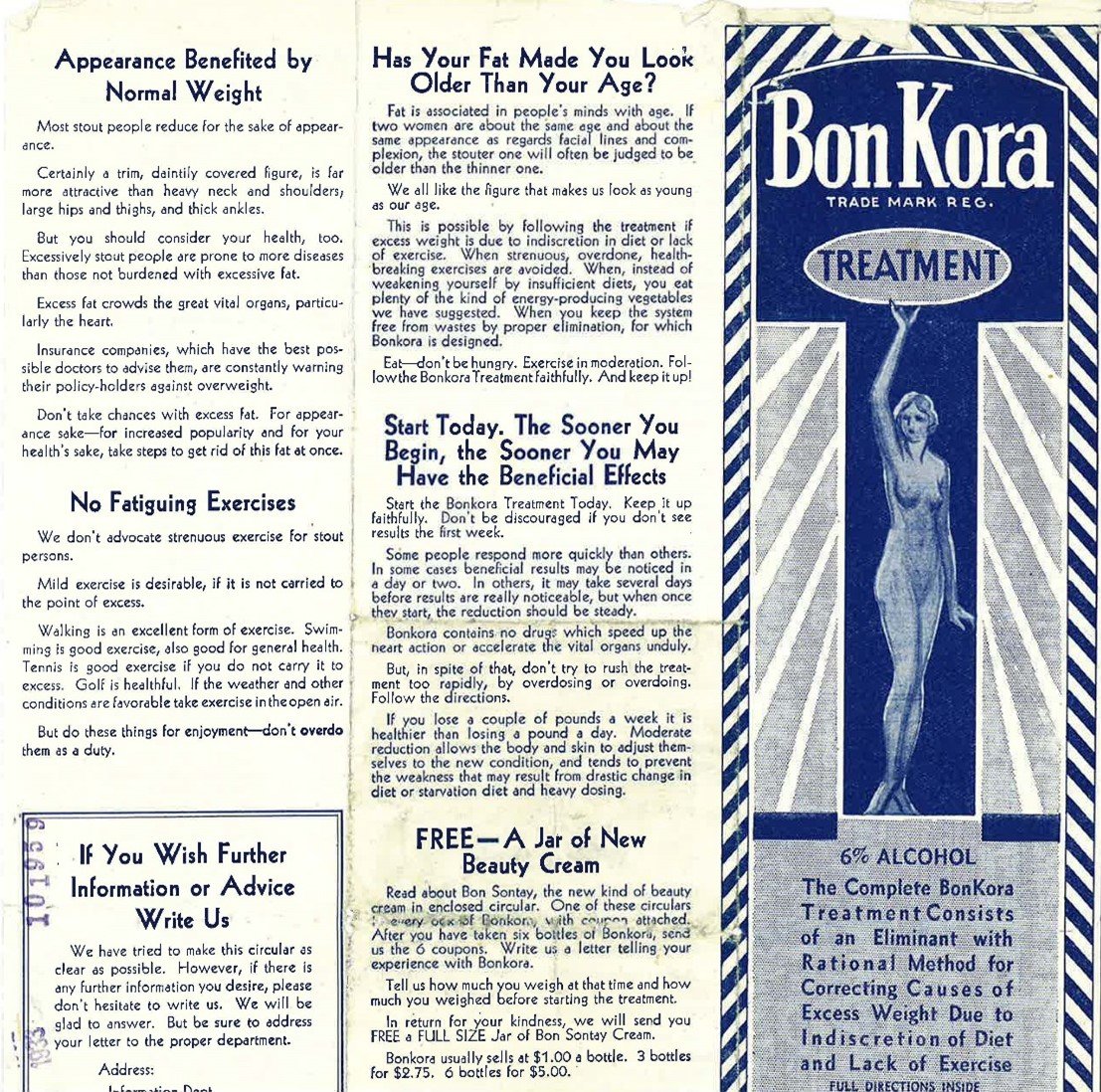
Figure 6. Alpine Trial Package, 1934
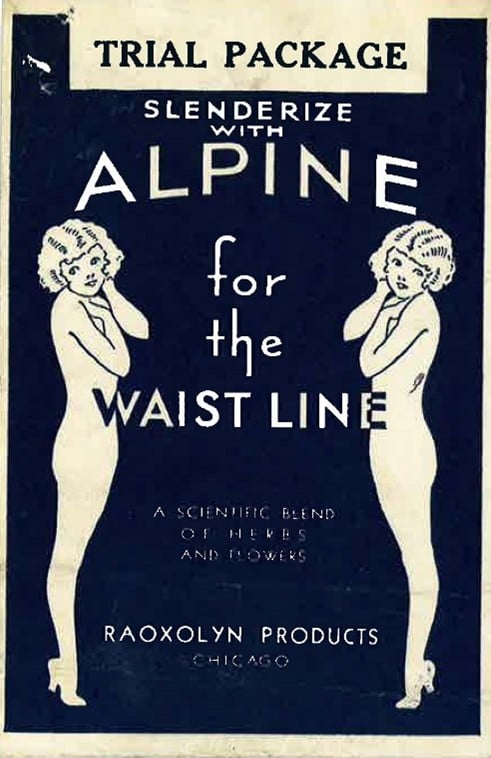
In 1941, the Federal Trade Commission successfully issued a cease-and-desist order to stop Re-duce-oids manufacturers from disseminating misinformation.12 Three years earlier in 1938, passage of the Food, Drug and Cosmetic Act enabled the US government oversight of some supplements,7 forcing many companies out of business. Demand continued apace, however, and new products entered the market.
In the 1950s, a variety of new supplements entered the market, including phenylpropanolamine, which was the primary ingredient in both Du-Dol and RX-120.
Figure 7. Du-Dol Ad, 1957
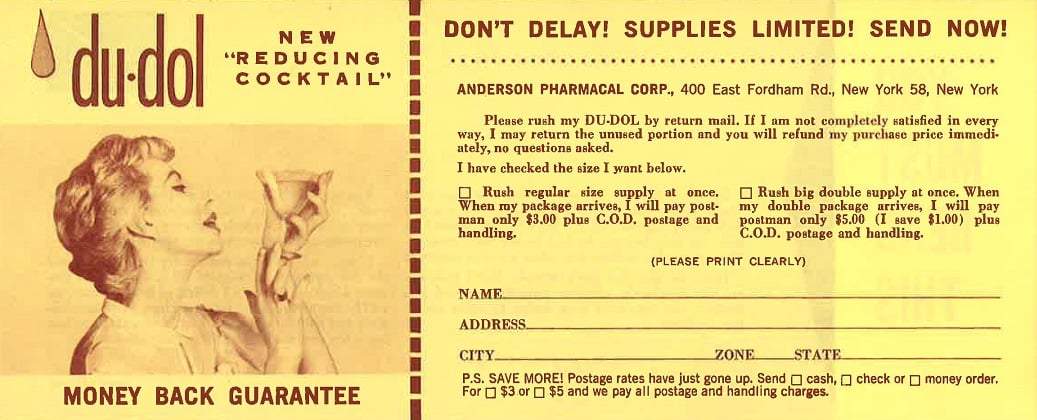
Figure 8. RX-120 Ad, 1958

Laboratory reports confirmed by 1958 that, taken in amounts allowed over the counter, phenylpropanolamine did not promote weight loss.13 By 1962, 20 court actions had been filed alleging false advertising for products containing phenylpropanolamine.14 This nasal decongestant and appetite suppressant was removed from over-the-counter sales in 2005.
Beauty Products and Cosmetics
Most beauty products and cosmetics were, and still are, applied topically. But demand for products promising clear, unblemished skin led some manufacturers to promote dietary supplements for this purpose, too, regardless of whether they worked.
Beecham’s pills claimed to cure acne. In addition to claiming to cure acne, Beecham’s pills also claimed to cure cold chills, “lowness of spirits,” stomach pain, wounds, and headaches. Scientists in England found that the pills contained aloe, ginger, and powdered soap.15
Figure 9. Beecham’s Pills Ad, circa 1909
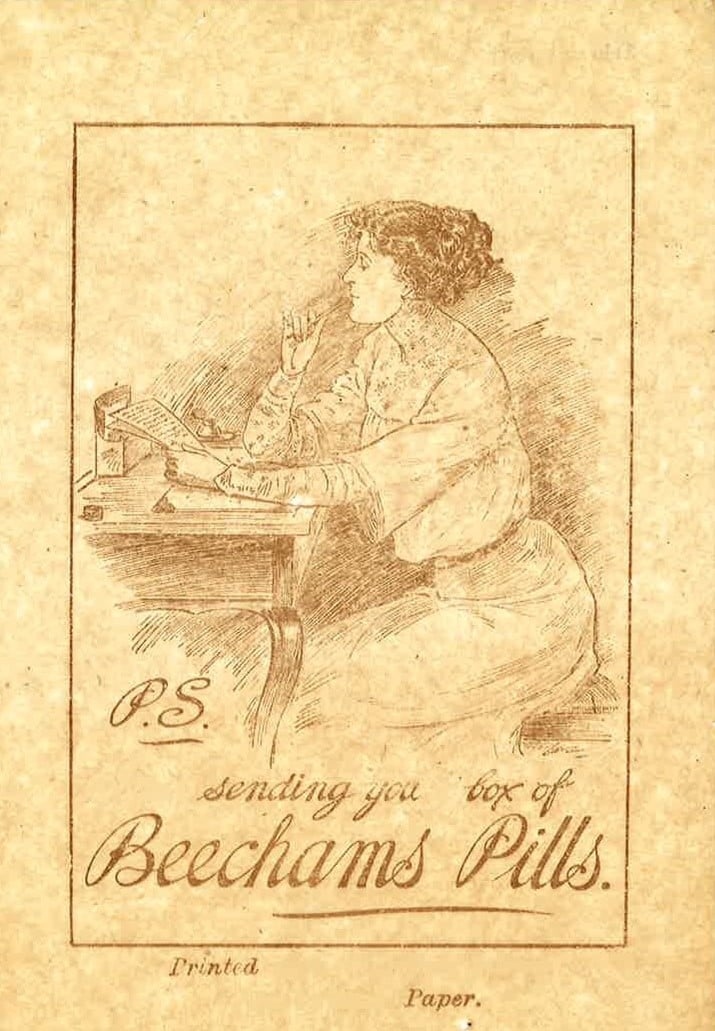
The Vitamine Farm, based in Geneva, Illinois, also promised a cure for a variety of ills with mineral salts and other ingredients printed in advertisements.
Figure 10. Vitamine Farm Ad, circa 1932
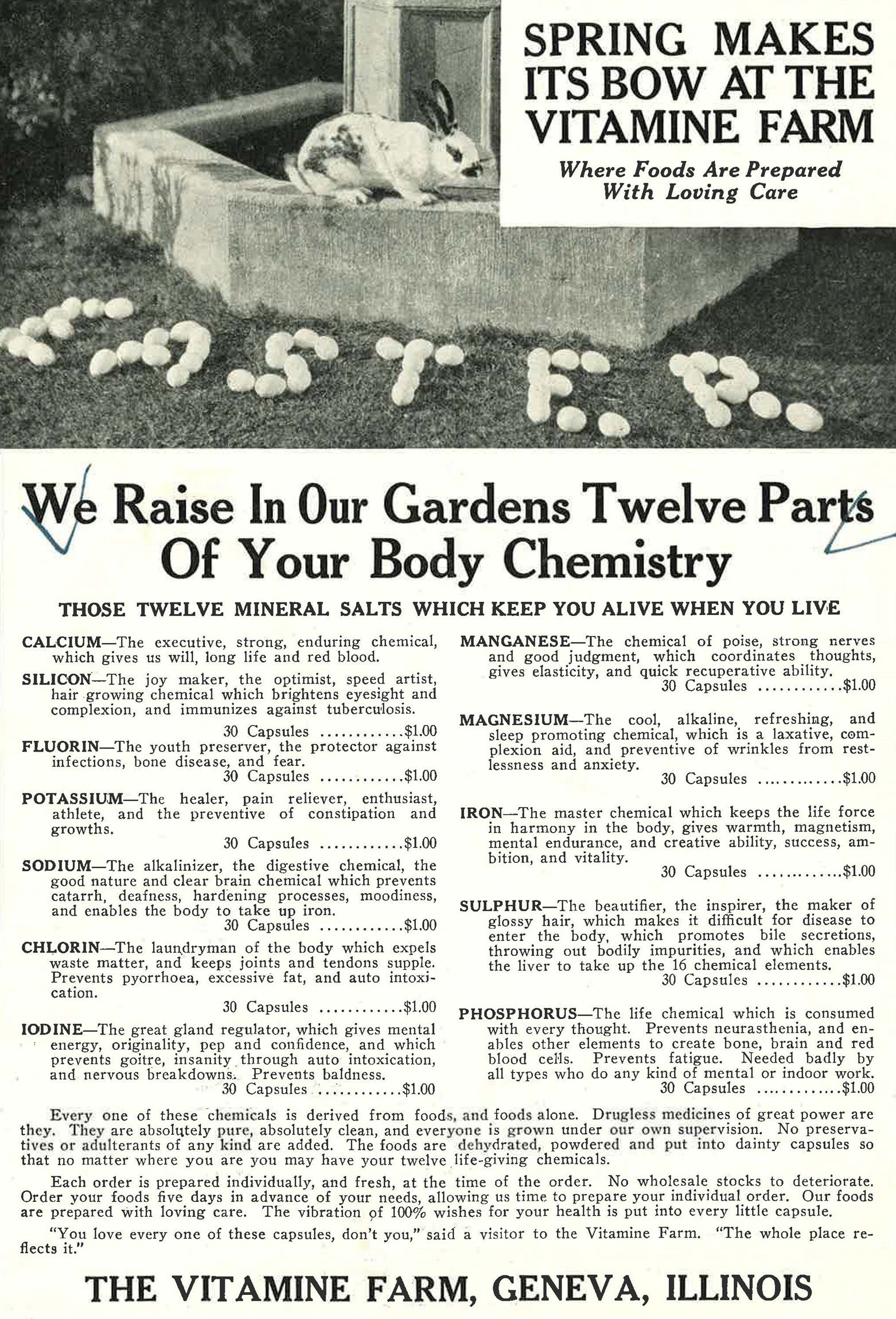
“Diseases of Men”
While weight loss and beauty products were aimed more at women than men, anything related to sex was nearly always geared to men. Impotence, virility, and venereal diseases were regarded as “diseases of men” that were “more sensitive” issues, requiring discretion. Physicians’ and manufacturers’ products targeting men were advertised in what were called street guides.
In the late 19th to mid-20th century, men could expect to come upon pocket-sized street guides, containing information about local baseball games, bus routes, health advice, a directory of men’s health specialists, and advertisements for tonics, creams, and capsules.16 Impotence or lack of sex drive were described euphemistically and as “abnormal conditions.”
Figure 11. Set of 3 Street Guides for Men, 1922 to 1937
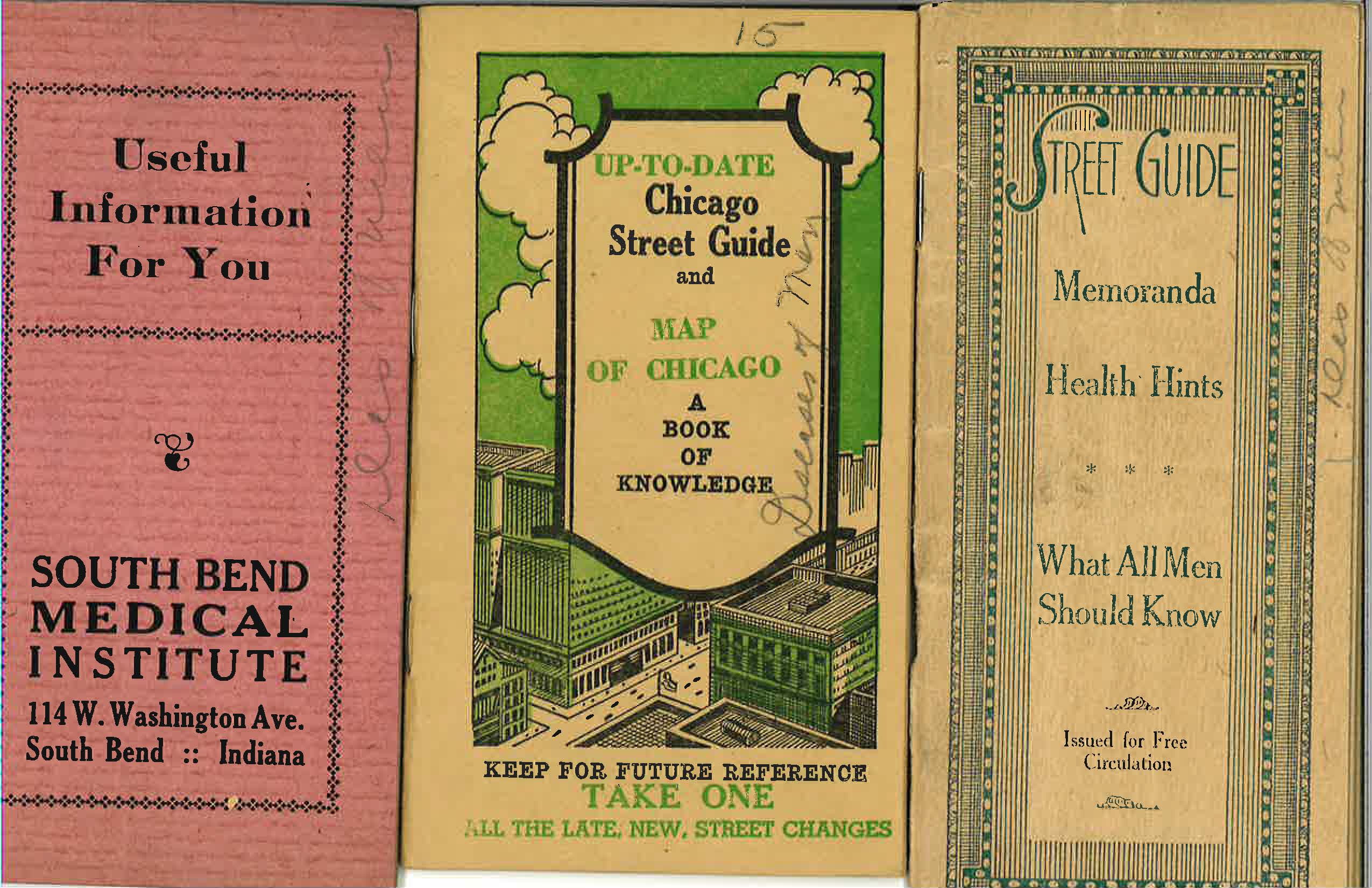
Figure 12: New Chicago Street Guide, 1928
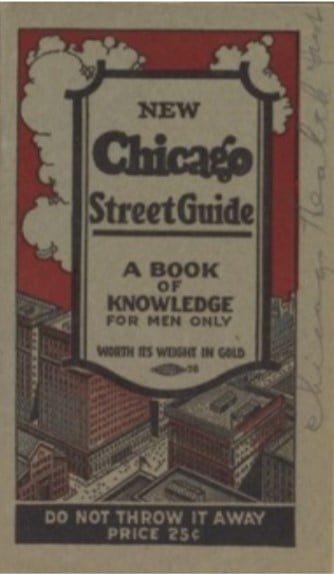
The Erie Medical Company advertised that its product, in which the main ingredient was hemoglobin of bullock’s blood, would transform men suffering “sexual weakness” into men as “strong as an ox.”17
Figure 13: Erie Medical Company Ad, 1911
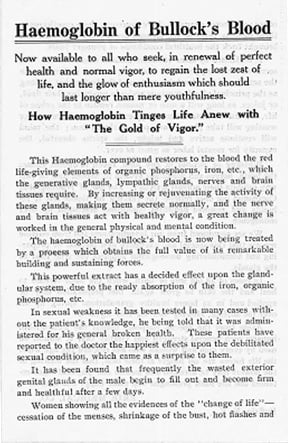
Celery City Company’s Dr Jirou marketed its “Famous French Prescriptions for sexual weakness, impotency, and small, shrunken organs,”18 as tablets containing leaves of coca (primary ingredient in cocaine), nux vomica (with strychnine and brucine, both poisonous), aphrodisiacal herbs and chemical compounds, and phosphorous (more common than bullock’s blood, but less common than glandular therapy, which is discussed below).
Figure 14. Celery City Company Famous French Prescriptions, 1915
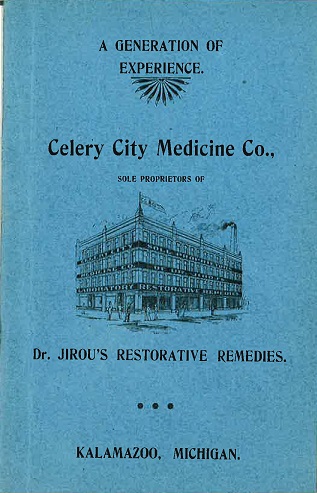
The Cavendish Phosphoric Treatment offered another phosphorous-based product. Ironically, high serum phosphorous levels are now known to cause erectile dysfunction in some cases.19
Figure 15. Cavendish Phosphoric Treatment, 1886

The Cumberland Chemical Company created a nostrum it called Sextonique, which promised to “rectify vital weakness” and Tonique Tablets to supplement the tonic 3 times per day.
Figure 16. Cumberland Chemical Company Pamphlet, 1926
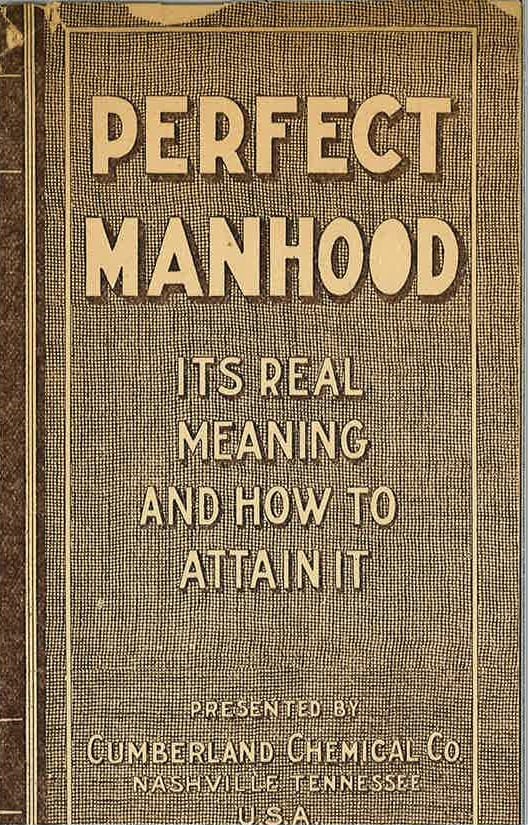
Figure 17. Cumberland Chemical Company Ad, 1925
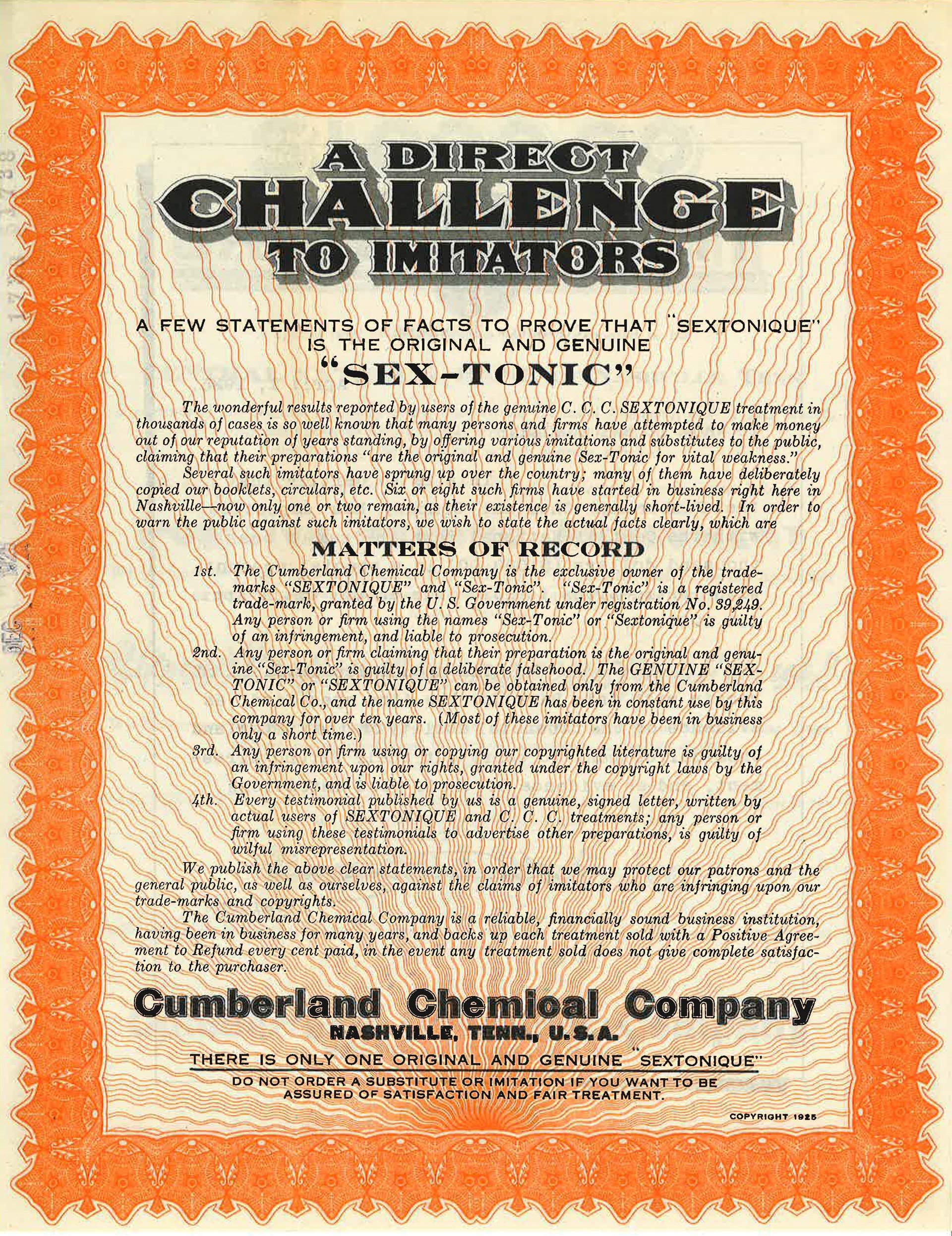
According to the AMA’s own Morris Fishbein, no method of treating illness in the 1920s was more popular than glandular therapy.20 Used for weight loss, impotence, and treating other ills, Goldglan glandular tonic was “recommended for the man who doesn’t realize that he is not paying his wife the attention he formerly did’” and was said to contain thyroid, anterior pituitary, and orchitic substances.21 Similar products are still sold today for erectile dysfunction, although as early as 1924, the AMA reported that there was not sufficient evidence to make these claims for glandular therapy.22
Figure 18. Goldglan Packaging, 1928
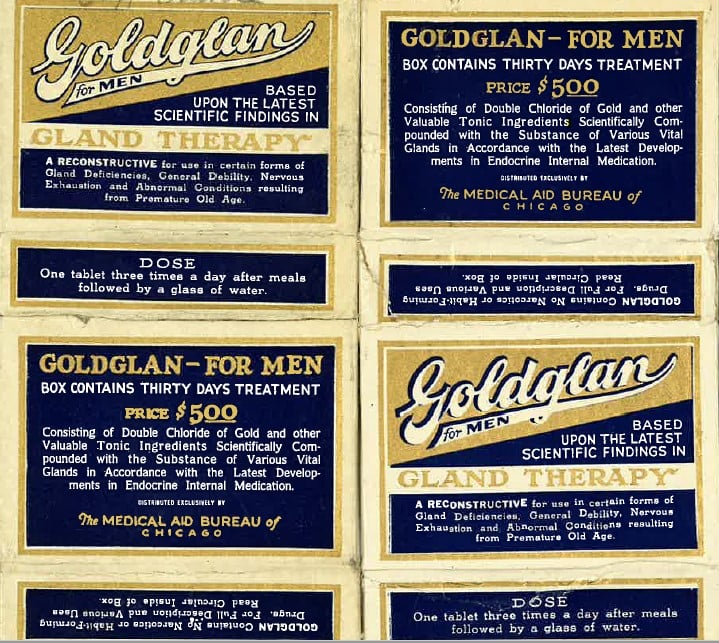
Conclusion
Despite some public backlash against the diet and beauty culture of the 21st century,23 weight loss and other products tempt many of us to attend our deepest insecurities. And despite FDA authority, unregulated supplements remain widely available and advertised. Items gathered in the AMA’s collection of quack beauty, weight loss, and virility products suggest the persistent appeal of enhancement and a century-old (at least) history of profiteering on insecurity.
References
-
Matthias M. Why did we start wearing makeup? In: Encyclopedia Britannica. Accessed July 22, 2021. https://www.britannica.com/story/why-did-we-start-wearing-makeup
- Watts I. The pigments from Pinnacle Point Cave 13B, Western Cape, South Africa. J Hum Evol. 2010;59(3-4):392-411.
-
Era of the Industrial Resolution. In: Encyclopedia Britannica. Accessed July 22, 2021. https://www.britannica.com/topic/publishing/Era-of-the-Industrial-Revolution
-
History of patent medicine: advertising and branding. Hagley Museum and Library. Accessed July 22, 2021. https://www.hagley.org/research/digital-exhibits/advertising-and-branding
- Cramp AJ. The Bureau of Investigation of the AMA. Am J Police Sci. 1931;2(4):285-289.
- Sandvick C. Enforcing medical licensing in Illinois: 1877-1890. Yale J Biol Med. 2009;82(2):67-74.
- Cohen PA, Goday A, Swann JP. The return of rainbow diet pills. Am J Public Health. 2012;102(9):1676-1686.
- Wang Y, Beydoun MA, Min J, Xue H, Kaminsky LA, Cheskin LJ. Has the prevalence of overweight, obesity and central obesity levelled off in the United States? Trends, patterns, disparities, and future projections for the obesity epidemic. Int J Epidemiol. 2020;49(3):810-823.
-
Jurgens T, Whelan AM. Can green tea preparations help with weight loss? Can Pharm J (Ott). 2014;147(3):159-160.
-
Bureau of Investigation. Re-Duce-Oids. J Am Med Assoc. 1942;118(3):247.
-
Whorton J. Civilization and the colon. Constipation as “the disease of diseases.” West J Med. 2000;173(6):424-427.
-
Re-Duce-Oids. News release. Federal Trade Commission; 1941. Historical Health Fraud and Alternative Medicine Collection, Box 611, Folder 09. American Medical Association Archives.
-
Du-dol no-diet “reducing cocktail.” National Better Business Bureau; 1958. Historical Health Fraud and Alternative Medicine Collection, Box 604, Folder 06. American Medical Association Archives.
-
RX-120. News release. US Food and Drug Administration; 1962. Historical Health Fraud and Alternative Medicine Collection, Box 611, Folder 02. American Medical Association Archives.
-
Report on Beecham’s Pills. American Medical Association; 1909. Historical Health Fraud and Alternative Medicine Collection, Box 81, Folder 18. American Medical Association Archives.
-
D’Agostino RA. The Annual Report of the Library Company of Philadelphia for the Year 2011. Library Company of Philadelphia; 2012. Accessed July 22, 2021. http://librarycompany.org/about/annualreports/AR2011_final__webview_lowres.pdf
-
“I feel strong as an ox.” Advertisement. Duluth Herald. July 15, 1912. Accessed July 14, 2012. https://archive.org/stream/july1191203dulu/july1191203dulu_djvu.txt
-
Dr Jirou’s restorative remedies. Advertisement. Celery City Medicine Co; 1915. Historical Health Fraud and Alternative Medicine Collection, Box 204, Folder 13. American Medical Association Archives.
- Min SK, Choi K, Kim SK, Lee GI, Cho IC. Phosphorus as predictive factor for erectile dysfunction in middle aged men: a cross sectional study in Korea. Investig Clin Urol. 2016;57(6):442-448.
-
De la Peña CT. Powering the intimate body. In: The Body Electric: How Strange Machines Built the Modern World. New York University Press; 2005:chap 4. Accessed on July 1, 2021. https://canvas.ou.edu/courses/96034/files/9382212/download?verifier=YYV0Fj0ys6Zg0TSmfXpVkbI4X1HjKWTOny6UiWv6&wrap=1
-
Cramp AJ. Nostrums and Quackery and Pseudo-Medicine. Vol 3. American Medical Association Press; 1936. Accessed on July 1, 2021. https://centerforinquiry.org/wp-content/uploads/sites/33/quackwatch/nostrums_3.pdf
- Billings F. Glandular therapy: introduction. J Am Med Assoc. 1924;83(13):1000-1001.
-
Landsverk G. “Intuitive eating” is on the rise, and experts say it’s because people are fed up with diet culture. Insider. January 21, 2020. Accessed on July 2, 2021. https://www.insider.com/what-is-intuitive-eating-does-it-work-2020-1
